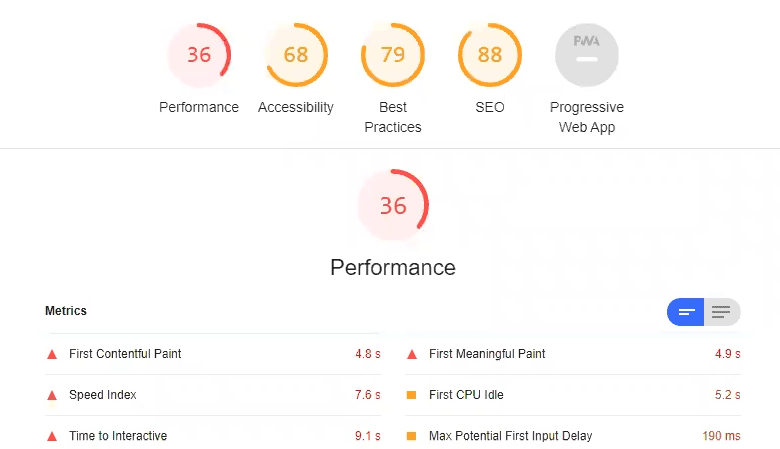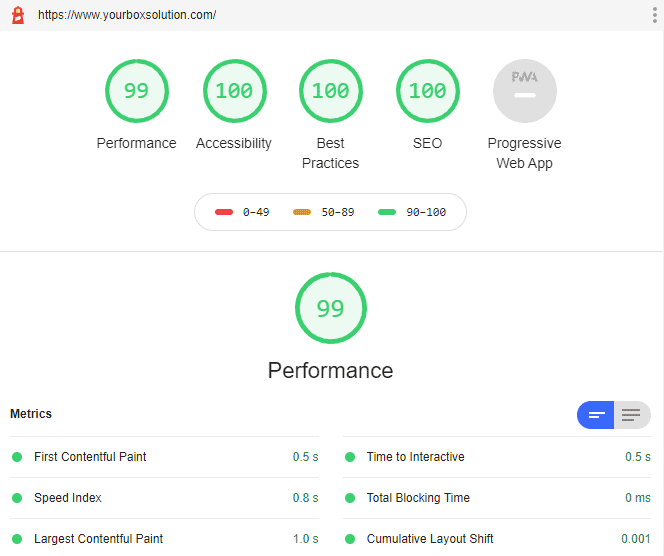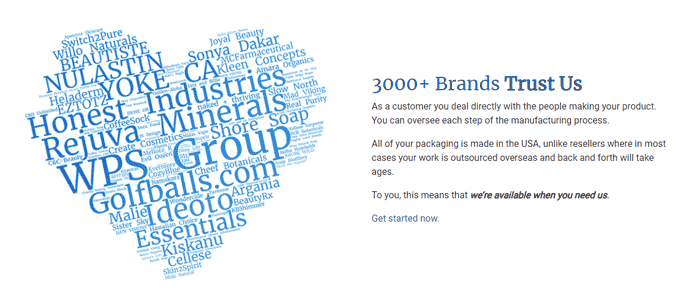
How We Helped A US Manufacturer Double Their Traffic In 8 Months & Get 722 Quote Requests In March 2021
Case Study: YourBoxSolution, box manufacturing company in Springfield, OR
Table of Contents
The Background
We hear you. You built your contracting business on sweat, skill, and maybe a killer reputation.
But let’s face it: the online world can feel like a different ball game. You take pride in what you do, but websites and SEO?
Yeah, that’s a whole different story.
Take YourBoxSolution (YBS), for example. This Oregon-based, family-owned company makes top-notch custom-printed boxes.
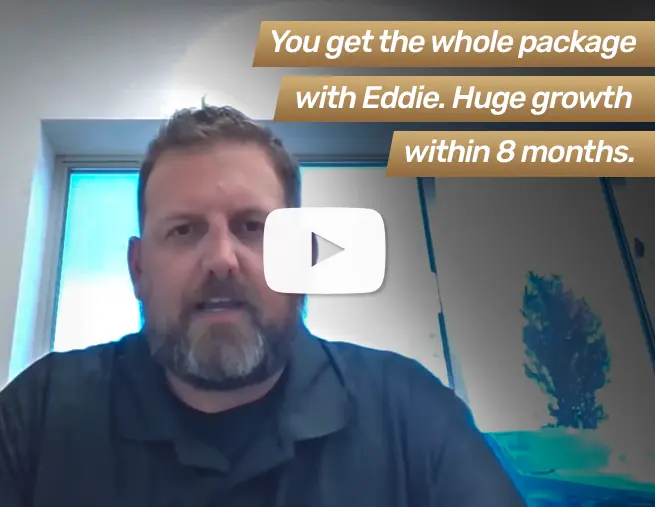
Blake Brewster from YourBoxSolution describes the journey with Contracting Empire and the results they were able to see happen.
They’re all about American-made quality at an affordable price. Sound familiars? They know their stuff, just like you. But by late 2019, they were facing a common contractor’s website nightmare: dwindling traffic.
Back in 2014, when YBS launched its website, things were simpler. Getting found online felt easier.
But guess what? The online landscape changes faster than a jackhammer on a deadline. Here’s the thing:
- Search Engines Got Smarter: Remember the good ol' days when ranking high just meant having the right keywords stuffed everywhere? Those days are long gone. Now, search engines like Google are all about user experience and understanding the real meaning behind your content.
- Competition Got Fiercer: The contracting world, just like the custom box market YBS faced, is full of competition. From established players to resellers and even overseas companies masquerading as US-based, the noise online can be deafening.
YBS’s website, once a lead magnet, was slowly turning into a ghost town. Traffic plummeted from a peak of 5,000 monthly visitors to a meager 3,000 by December 2019.
Ouch.
That’s a familiar feeling, isn’t it?
You put in the hard work, but your website isn’t reflecting your expertise or attracting new clients.
That’s where we came in.
We knew YBS had a great story to tell, but their website wasn’t telling it.
A quick audit using Google Lighthouse revealed their website was in rough shape.
Imagine this:
- Slow Loading Times: Visitors had to wait a whopping 4.9 seconds just to see something on the screen, and a painful 9.1 seconds before they could actually interact with the site. That's an eternity in the online world, where people expect instant gratification.
- Accessibility Issues: The website wasn't user-friendly for people with disabilities, which not only excludes potential clients but can also hurt your search engine ranking.
- Security Concerns: The website wasn't following best practices for security and data delivery. Think of it like leaving your toolbox unlocked overnight – a major red flag for potential customers.
- Missing SEO Essentials: Basic features like relevant titles and descriptions, crucial for search engines to understand your website's content, were simply missing.
- Mobile Unfriendly: In today's mobile-first world, having a website that doesn't work seamlessly on smartphones and tablets is a major turn-off for potential customers.
In addition to these technical problems, YBS was facing an increasingly competitive landscape. A flood of Chinese manufacturers posing as US-based companies, along with resellers offering similar boxes, was making it harder for YBS to stand out.
But we made it work with actionable steps that can be applied to your contracting business, too!
For now, just remember: you’re not alone in this struggle.
We’ve seen it all, and we’re here to help.
The Challenges
You’re rushing to a job site, toolbox in hand, and realize you forgot a crucial tool.
Talk about a headache!
Your website should be an extension of your professionalism, a reliable tool that showcases your expertise and attracts new clients.
But just like a rusty toolbox, a website riddled with problems can hold your business back.
Here’s what YBS faced and what you might be facing too.
The Slowpoke Website
Say a potential client Googles “basement waterproofing Denver” and stumbles upon your website. They’re excited to see your work, but then… nothing.
The page takes forever to load.
In today’s world, with lightning-fast internet speeds, people expect instant gratification. A slow website (like YBS’s, which took almost 5 seconds even to display content!) is the online equivalent of a client waiting for you to show up hours after the agreed time. Frustration sets in, and chances are they’ll head straight to your competitor with a website that loads in a blink.
We optimized YBS’s website to load super-fast.
Think of it as giving your website a tune-up and a fresh coat of paint. There are technical aspects to website speed, but let’s just say we cleaned up the code, optimized images, and ensured everything ran smoothly.
The result?
A happy user experience and more potential clients who can see your amazing work quickly and easily.
Website (In)Accessibility
YBS’s website wasn’t accessible to people with disabilities. This might not be the first thing that comes to mind, but it’s an important factor for two reasons.
First, it’s the right thing to do – everyone deserves equal access to information online.
Second, search engines like Google actually consider website accessibility when ranking websites. Think of it like having a great storefront with a giant step leading up to the door—it might look nice, but a lot of people won’t be able to get in!
We made sure YBS’s website followed accessibility best practices. This means things like clear navigation, proper use of color contrast, and features that work with screen readers used by visually impaired people.
It’s a win-win – you create a welcoming online space for everyone and potentially improve your search ranking in the process.
Unlocked Toolbox Website Security
YBS’s website had security vulnerabilities, which is essentially like having a digital toolbox with a broken lock. Potential clients might be nervous about entering their information or trusting your website with their project details.
We implemented best practices to tighten YBS’s website security. This involved using strong encryption protocols and keeping the website’s software up-to-date.
This gives potential clients peace of mind, knowing their information is safe and secure.
Missing SEO Essentials
Search engines are like the busy information booths of the online world. People use them to find what they need, and if your website doesn’t speak their language, it might get lost in the shuffle.
YBS’s website lacked basic SEO features, like relevant titles and descriptions.
These are like little signs on your website that tell search engines what your business is all about. Without them, search engines won’t know what’s inside, and potential clients won’t be able to find you.
We optimized YBS’s website with relevant keywords and descriptions, making it easier for search engines to understand their content.
Now, when someone searches for “custom printed boxes” on Google, there’s a much higher chance they’ll find YBS’s website at the top of the search results.
Mobile Unfriendly Website
Assume a homeowner is in the middle of a kitchen renovation disaster. The faucet’s leaking everywhere, and they urgently need a plumber. They whip out their phone and search for “emergency plumbers near me.”
Your plumbing company’s website is beautiful, but it’s not mobile-friendly. The loading times are slow, the buttons are too small to tap easily, and the contact information is buried under layers of menus.
Frustrated, the homeowner moves on to the next search result, a competitor with a mobile-friendly website that allows them to call with a single tap.
This scenario plays out countless times every day for contractors with non-mobile-friendly websites.
Here’s the harsh reality:
- Missed Leads: People expect a seamless experience on their phones. A clunky website frustrates potential clients and drives them straight to your competitors.
- Damaged Reputation: A slow, mobile-unfriendly website can make your business look unprofessional and out-of-touch. In today's competitive market, first impressions matter.
- Lost Revenue: Every frustrated mobile visitor is a lost opportunity. They could have been a potential customer ready to contact you, but your website made it too difficult.
Here’s the thing: many contractors get caught up in creating a visually stunning website with all the bells and whistles—high-resolution images, fancy animations, the whole package.
It looks great on a desktop computer but not so much on a phone.
Those flashy elements can take forever to load, and navigating the website on a small screen becomes a frustrating exercise in zooming and scrolling.
Mobile optimization ensures your website displays beautifully and functions flawlessly on any device, from a giant desktop monitor to a tiny smartphone screen.
Images resize automatically, text is clear and readable, and buttons are easy to tap. It’s a seamless experience for potential clients, no matter how they choose to browse the web.
A mobile-friendly website ensures potential clients can find you, learn about your services, and contact you easily, no matter what device they’re using.
The Strategy
First things first, we started by getting to know YBS’s audience and website inside out. Think website speed, mobile-friendliness, SEO—the whole nine yards.
We also looked at how visitors navigated the site, uncovering their frustrations and hidden opportunities. And, of course, we checked out the competition to see what they were doing well (and not so well).
Based on this intel, we implemented a two-pronged attack:
- Website Revamp: YBS's old website was a slow, confusing mess with no clear value proposition. So, we gave it a total overhaul, focusing on a smooth user experience, lightning-fast loading times, and crystal-clear calls to action.
- Content Marketing Magic: We created informative blog content that targeted search terms relevant to YBS's services. This strategy attracts the right kind of leads and positions YBS as an authority in the industry (think of it as establishing mad cred).
Here’s the kicker: these strategies also tackle the biggest pain points for contracting businesses:
- Turning Your Website into a Lead Magnet: Let's be honest; most contractor websites are lead-generation black holes. Our approach transforms your website into a showcase for your expertise, compelling visitors to become paying clients.
- Understanding Your Customers: Forget guesswork. By researching customer behavior and search intent, we craft messaging that speaks directly to their needs and desires.
- Building Trust and Street Cred: People hire contractors they trust. Highlighting social proof (like glowing reviews) and industry expertise builds that trust and credibility.
- Standing Out From the Pack: The contracting world is competitive. SEO and targeted content marketing are your secret weapons to cut through the noise and attract qualified leads.
Implementing this data-driven marketing strategy supercharged YBS’s online presence and lead generation. Let’s take a closer look at the kind of magic that can work for you, too.
The Results
Fast-Loading Website
Before diving into speed optimization, we recommend a comprehensive website assessment. This involves evaluating four key areas:
- Technical: This covers mobile-friendliness, loading speed, site security, and technical SEO.
- Customer: Understanding your current customer base, current situation, desired outcome, psychology, trust, perception, etc., is vital.
- Marketing: This area focuses on the customer journey, website copywriting, content strategy, marketing goals, and conversion optimization.
- Backend: Sales processes, customer relationship management (CRM), customer lifetime value, and overall sales funnel efficiency are crucial aspects.
In today’s digital age, attention spans are shorter than ever. When potential customers visit your contracting company’s website, they expect a fast, user-friendly experience.
If your website takes forever to load or is confusing to navigate, they’ll bounce off faster than you can say “free estimate.”
Been there?
A slow, clunky website is a conversion killer. Here’s why website speed is your secret weapon:
- Your website is often the first interaction a potential customer has with your business. A polished, user-friendly site creates a positive first impression, building trust and credibility.
- Nobody has time for a website that takes ages to load. Studies show visitors bounce off websites that take more than 3 seconds to load. Every millisecond counts!
- A well-optimized website is easy to navigate, with clear calls to action and relevant information readily available. This ensures visitors can find what they need quickly and easily.
- Google prioritizes websites that offer a good user experience. A faster, more streamlined website improves your SEO ranking, making you more visible in search results.
Just by increasing your website’s speed, we can decrease the bounce rate, a.k.a. how fast people close the website.
To put things in perspective:
1.
57% of visitors leave the site if the page takes more than 3 seconds to load (Google/SOASTA Research, 2017)
2.
Improving your load time by 0.1s can boost conversion rates by 8% (Google, 55 and Deloitte Research, 2020)
3.
Amazon loses 1% of sales for every 100ms of load time (Stanford, Amazon, 2007)
4.
Walmart increased conversion by +2% per 1-second load time improvement (WalmartLabs, 2012)
TIP: You can check your site’s loading speed using the free tool at gtmetrix.com
A Website That Converts Users To Leads
Let’s look at their old website to see what was wrong with it.
- 1. There were 3 types of main navigation with 15 possible choices.
- 2: The value proposition was animating between different options and wasn’t clear.
- 3: The website bombarded visitors with a slideshow overflowing with conflicting value propositions and calls to action.
- 4: Another place for them to make a choice out of 3 possible options.
Specialized Services
Say you need a bathroom remodeled. Would you call a general contractor who does “a little bit of everything” or a specialist who focuses on bathrooms?
Most people choose the specialist.
That’s the power of specialization in contracting.
People don’t want to wade through 20 different services on your website. If you confuse them with choices, they’ll leave frustrated.
Instead, make it easy!
- Focus on high-demand services: Analyze your past clients. What services do most people request? Focus your message and calls to action on those popular options.
- Simplify the path to a quote: Don't overwhelm visitors with a library of boxes or multiple contact options. Guide them towards the action that converts best: getting a quote.
- Identified the top converting action: Getting a quote was the clear winner.
- Built a quote page with value: We combined the best aspects of the quote page and library page to provide a valuable and informative experience for potential customers.
- "Above the Fold" Optimization: We focused on crafting a compelling first impression. YBS's homepage now showcases its best work with clear messaging and a prominent "Get a Quote" button – all visible within the first screen (above the fold).
Going Mobile-Friendly
Since 2017, smartphones have driven nearly half of all web traffic globally. The trend is clear: mobile is the future of internet browsing.
And Google, the search engine giant, took notice. In 2015, they announced that mobile-friendliness would be a key factor in search engine ranking.
This means websites that aren’t mobile-friendly are getting pushed down in search results, making them harder for potential customers to find.
YourBoxSolution experienced this firsthand. In November 2019, their mobile traffic started a slow decline, dropping to 756 visitors.
When we launched YBS’s new mobile-optimized website, mobile traffic skyrocketed to around 1,500 visitors – a significant jump!
Even a temporary traffic dip during COVID couldn’t hold it back. Within two months, mobile traffic was on the rise again.
Don’t let a clunky mobile website cost you valuable leads. Use Google’s free mobile-friendliness tool to check your website now.
Fast Forward On Trust
Seth Godin, one of the greatest marketers and founders of permission marketing, said:
“People like us do things like this.
There is no more powerful tribal marketing connection than this.
More than features, more than benefits, we are driven to become a member in good standing of the tribe”.
We want to fit in.
We want to make the right decisions fast and painless.
When making decisions, we all crave reassurance.
We look for signals that a product or service is trustworthy.
- "More than 80% of dentists recommend Colgate"
- "Trusted by thousands of homeowners on Angie's List"
These phrases leverage social proof, the psychological phenomenon where we rely on the actions and opinions of others to guide our own choices.
This applies to your contracting business too!
Potential customers are looking for cues that validate your expertise and trustworthiness.
Here’s how to leverage social proof:
- Showcase positive customer reviews: Display glowing testimonials and star ratings prominently on your website.
- Highlight your customer base: If you have a large and satisfied clientele, use that number to your advantage! Have them think, "If 4,000 people trust them, I should too."
- Feature case studies: Showcase successful projects you've completed for past clients. This provides visual proof of your skills and the value you deliver.
Unleashing SEO Power
Imagine carrying a leaky bucket filled with water.
Even with some drips along the way, you’ll still have water left. That’s like attracting random website traffic. It might generate some leads, but it’s inefficient.
Random traffic is like that leaky bucket. Targeted traffic is like a perfect vessel, delivering qualified leads directly to you.
Many shady SEO services promise quick fixes and irrelevant traffic. Here’s a better approach:
- Content is King: Create high-quality, informative content relevant to your contracting services. Blog posts like the ones we created for YBS, which each brought in almost 500 visitors, are a great example.
- Long-Term Strategy: SEO is a marathon, not a sprint. A 12-month commitment, like our client YBS made, allows you to build long-term authority and organic traffic growth.
- Authority & Trust: The more relevant content you publish, the higher your website ranks in search results. This establishes you as an expert in your field and builds trust with potential customers.
Yes, SEO requires an investment. But the return can be phenomenal.
By investing in SEO, YBS doubled its new customer acquisition (from 20 to 40 per month) within 8 months. Considering their average customer lifetime value of $3,000, this translates to a staggering 1,900% return on investment!
While short-term SEO scams exist, a well-planned SEO strategy is a goldmine for contracting businesses.
Here’s why:
- Evergreen Benefits: Unlike paid advertising, SEO results are long-lasting. High-quality content continues to attract visitors even after you stop actively creating new content.
- Scalability: As your website's authority grows, you'll attract more organic traffic without additional investment.
If you do a job for $14k at a 50% profit margin, that’s $7k.
A single contracting job can cover your SEO costs for two months. If that investment brings in just one additional high-quality client per month, you’ve broken even – with the potential for continuous growth.
Not all SEO companies are created equal. Beware of those making unrealistic promises or lacking transparency. Always ask for details on their strategy, reports, and results. We offer these as a given.
Increased Conversions
We’ve established that increasing website traffic is great, but imagine doubling your conversion rate on top of that!
This means a higher percentage of visitors actually take the desired action, like requesting a quote.
Many businesses operate in the dark, making decisions based on gut feelings rather than data.
This is a recipe for wasted resources.
Here’s why tracking website data is crucial:
- Identify Underperforming Pages: YBS, for example, believed certain pages were performing well. After analyzing Google Analytics data, we discovered these pages weren't generating leads. This allowed us to reallocate resources to high-performing content.
- Make Data-Driven Decisions: Track key performance indicators (KPIs) like traffic, goal completions (e.g., quote requests), and website health scores. This data empowers you to make informed decisions about your website and marketing efforts.
- Boost SEO Rankings: Search engines prioritize user experience. By creating a website that delivers a fast, secure, and enjoyable experience, you'll naturally improve your search engine ranking, attracting more qualified leads.
Here at Contracting Empire, tracking is part of our DNA.
We constantly examine inputs and outputs to assess the best course of action. This includes everything from traffic to goal completions and even site health scores.
But let’s get back to conversions.
Before attempting to increase them, it’s important to understand that they stem from either the pages on the website or the process as a whole.
Below are some of the best questions we consider:
Page Conversion Questions
- How many users have visited the site last month?
- How many pages have these users visited?
- What pages bring in the most visitors?
- How much time did they spend on the site on their visit?
- How many filled out the quote request form?
- How many dropped off and why?
- What were the changes in conversions after implementing X change on the Y page?
Process Questions
- Was there any change made to the first contact with the prospect? If so, what's the outcome?
- Were the quote requests answered on time?
- Was the prospect followed up with?
- What objections come up during the calls and how are these handled?
- What has been the mental state of the sales reps this past month?
We are not going to take credit for the job the sales reps do in a company.
They lead to the successful conversion of the prospect into a paying customer. YourBoxSolution has some amazing sales reps who have been very open to suggestions.
Even if YBS serves another industry, results like these are also possible for your contracting business.
Key Takeaways
This case study barely scratches the surface of the expertise we bring to your business.
Because we know our way around marketing systems and understand everything from user behavior to tracking the right metrics, we help you:
- Get a lightning-fast website that converts leads, not bounces. We'll optimize speed for under 3 seconds.
- Reach a wider audience and boost SEO with a website that's inclusive for everyone.
- Secure your website to build trust and keep customer data safe.
- Optimize your website content to rank higher in search results and attract more qualified leads.
- Ensure your website offers a flawless experience on any device, especially smartphones and tablets.
- Create high-quality content that positions you as an expert and attracts ideal clients.
- Design a user-friendly website with clear calls to action that drive conversions.
- Develop a data-driven SEO strategy for sustainable organic traffic growth and brand authority.
- Track and analyze your website data to identify areas for improvement and optimize conversions.
Similar Case studies

We took a subcontractor making $8k a month by installing windows for others, to making over $50k a month for himself.

We helped a remodeling company in Nevada earn over $1.25 million dollars after an investment of just $27k.
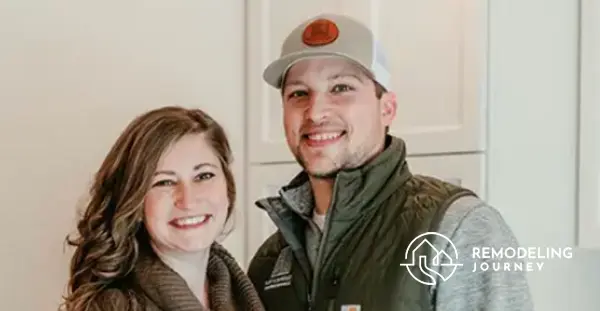
We worked hard for this small local remodeling company in rural Wisconsin to reach over a million dollars in sales in less than a year.


